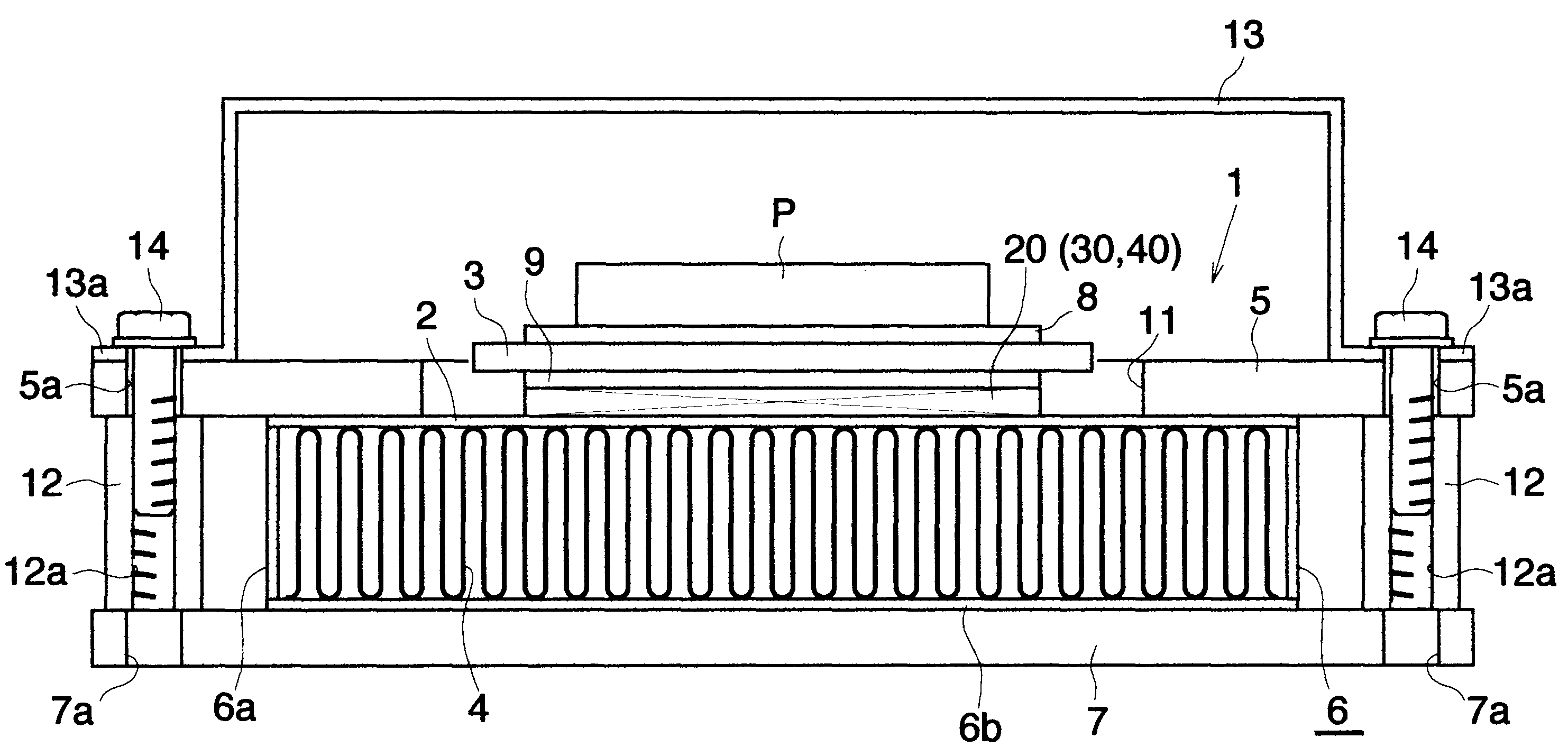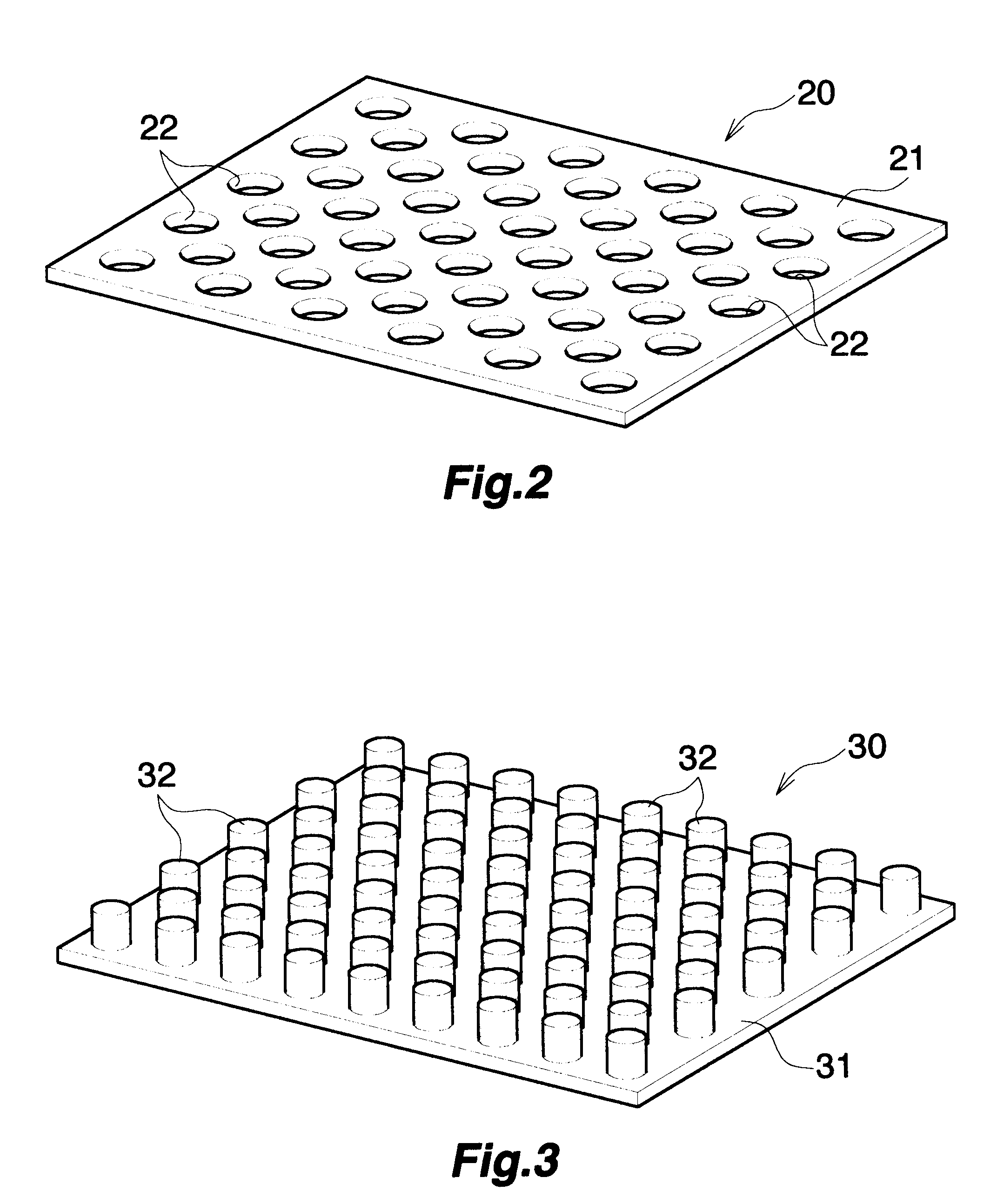Base for power module
a power module and base technology, applied in the direction of power cables, lighting and heating apparatus, cables, etc., can solve the problems of warpage of heat radiation substrates, inability to accurately attach various components to heat radiation substrates, and inability to seal the resin casing in a sealed condition without forming a clearance, etc., to achieve accurate attachment, accurate attachment, and high rigidity
- Summary
- Abstract
- Description
- Claims
- Application Information
AI Technical Summary
Benefits of technology
Problems solved by technology
Method used
Image
Examples
Embodiment Construction
[0035]Embodiments of the present invention will next be described with reference to the drawings. In the following description, the upper, lower, left-hand, and right-hand sides of FIG. 1 will be referred to as “upper,”“lower,”“left,” and “right,” respectively.
[0036]FIG. 1 shows the overall structure of a power module which uses a power module base according to the present invention.
[0037]In FIG. 1, the power module base (1) includes a heat radiation substrate (2); an insulating substrate (3) brazed to an upper surface of the heat radiation substrate (2); a heat radiation fin (4) brazed to a lower surface of the heat radiation substrate (2); an upper component attachment plate (5) brazed to a portion of the upper surface of the heat radiation substrate (2), the portion surrounding the insulating substrate (3); a cooling jacket (6) fixed to the lower surface of the heat radiation substrate (2) and covering the heat radiation fin (4); and a lower component attachment plate (7) (a seco...
PUM
 Login to View More
Login to View More Abstract
Description
Claims
Application Information
 Login to View More
Login to View More - R&D
- Intellectual Property
- Life Sciences
- Materials
- Tech Scout
- Unparalleled Data Quality
- Higher Quality Content
- 60% Fewer Hallucinations
Browse by: Latest US Patents, China's latest patents, Technical Efficacy Thesaurus, Application Domain, Technology Topic, Popular Technical Reports.
© 2025 PatSnap. All rights reserved.Legal|Privacy policy|Modern Slavery Act Transparency Statement|Sitemap|About US| Contact US: help@patsnap.com



